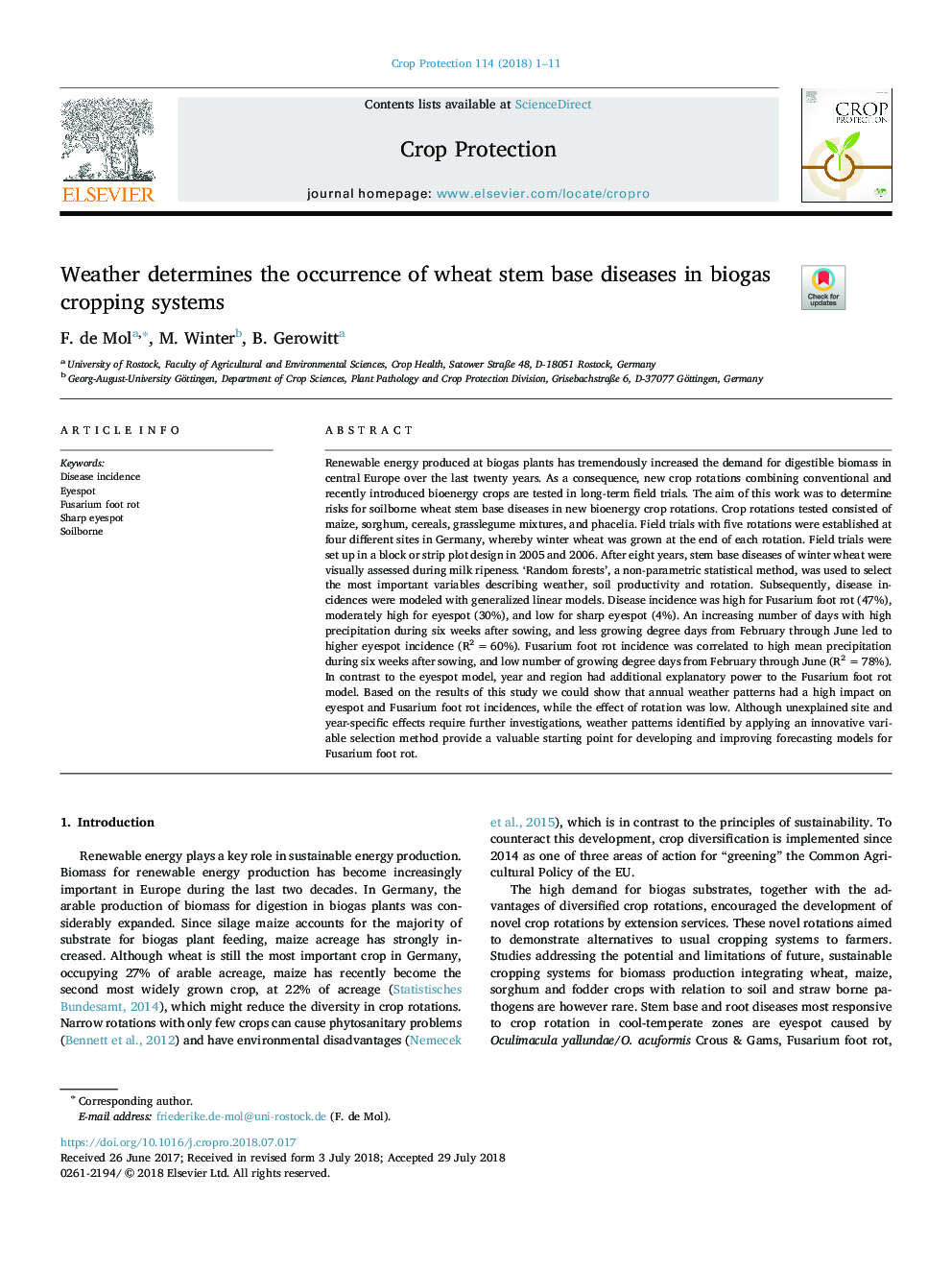| کد مقاله | کد نشریه | سال انتشار | مقاله انگلیسی | نسخه تمام متن |
|---|---|---|---|---|
| 8877811 | 1624273 | 2018 | 11 صفحه PDF | دانلود رایگان |
عنوان انگلیسی مقاله ISI
Weather determines the occurrence of wheat stem base diseases in biogas cropping systems
ترجمه فارسی عنوان
هوا، وقوع بیماری های پایه گندم را در سیستم های کشت بیوگاز تعیین می
دانلود مقاله + سفارش ترجمه
دانلود مقاله ISI انگلیسی
رایگان برای ایرانیان
کلمات کلیدی
بروز بیماری، عینک آفتابی پوسیدگی پای فوزاریوم، چشم چشمی، خاکستر
موضوعات مرتبط
علوم زیستی و بیوفناوری
علوم کشاورزی و بیولوژیک
علوم زراعت و اصلاح نباتات
چکیده انگلیسی
Renewable energy produced at biogas plants has tremendously increased the demand for digestible biomass in central Europe over the last twenty years. As a consequence, new crop rotations combining conventional and recently introduced bioenergy crops are tested in long-term field trials. The aim of this work was to determine risks for soilborne wheat stem base diseases in new bioenergy crop rotations. Crop rotations tested consisted of maize, sorghum, cereals, grasslegume mixtures, and phacelia. Field trials with five rotations were established at four different sites in Germany, whereby winter wheat was grown at the end of each rotation. Field trials were set up in a block or strip plot design in 2005 and 2006. After eight years, stem base diseases of winter wheat were visually assessed during milk ripeness. 'Random forests', a non-parametric statistical method, was used to select the most important variables describing weather, soil productivity and rotation. Subsequently, disease incidences were modeled with generalized linear models. Disease incidence was high for Fusarium foot rot (47%), moderately high for eyespot (30%), and low for sharp eyespot (4%). An increasing number of days with high precipitation during six weeks after sowing, and less growing degree days from February through June led to higher eyespot incidence (R2â¯=â¯60%). Fusarium foot rot incidence was correlated to high mean precipitation during six weeks after sowing, and low number of growing degree days from February through June (R2â¯=â¯78%). In contrast to the eyespot model, year and region had additional explanatory power to the Fusarium foot rot model. Based on the results of this study we could show that annual weather patterns had a high impact on eyespot and Fusarium foot rot incidences, while the effect of rotation was low. Although unexplained site and year-specific effects require further investigations, weather patterns identified by applying an innovative variable selection method provide a valuable starting point for developing and improving forecasting models for Fusarium foot rot.
ناشر
Database: Elsevier - ScienceDirect (ساینس دایرکت)
Journal: Crop Protection - Volume 114, December 2018, Pages 1-11
Journal: Crop Protection - Volume 114, December 2018, Pages 1-11
نویسندگان
F. de Mol, M. Winter, B. Gerowitt,
